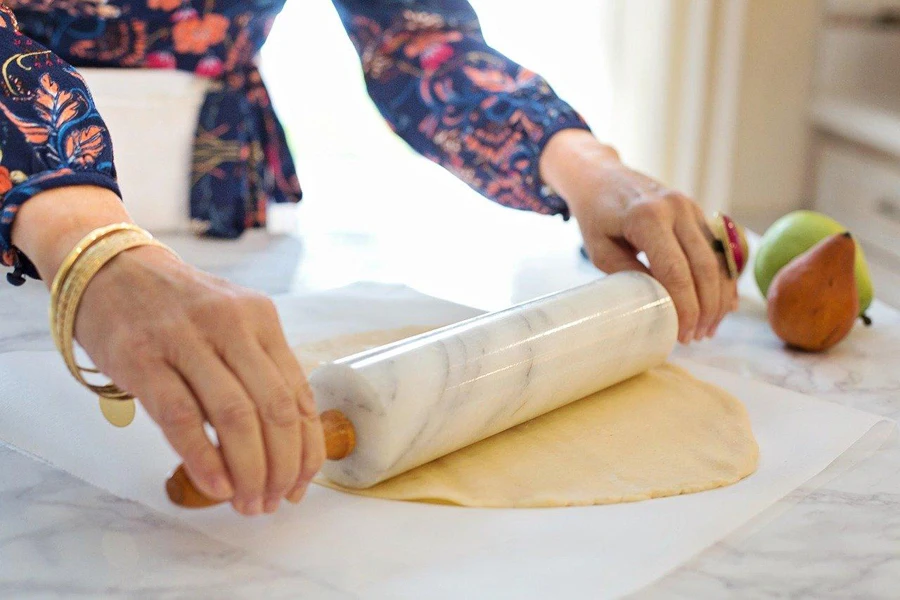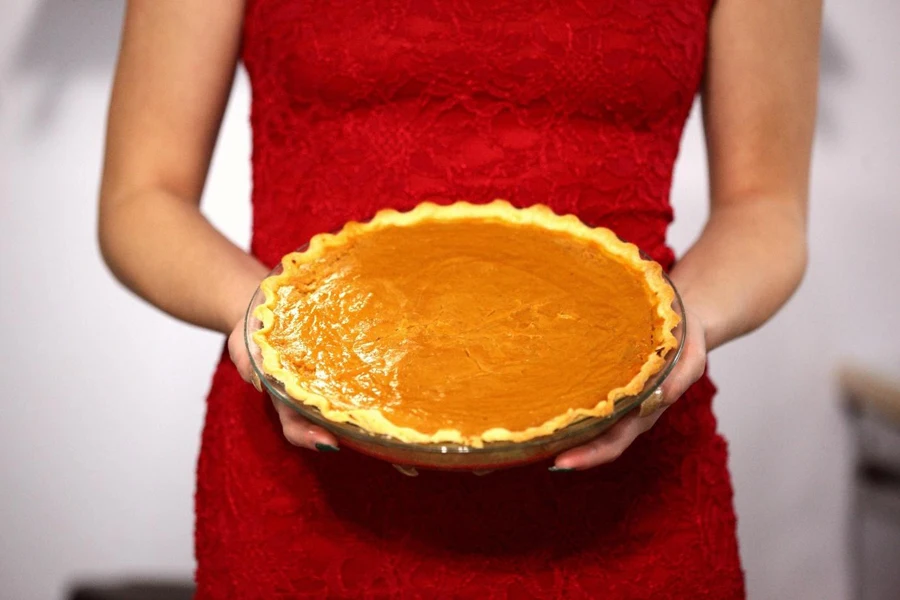Table of Contents
● Introduction
● Market overview
● Different types and their features
● Things to consider when selecting products
● Conclusion
Introduction

Crafting an ideal pie demands precision and the use of good quality tools to ensure consistent, professional results. The right equipment not only streamlines the baking process but also enhances the overall quality of the final product. In a competitive market where efficiency and excellence are paramount, selecting the appropriate pie tools becomes a strategic decision. Understanding the nuances of different tools and their impact on pie-making can significantly elevate the standard of baked goods. For businesses invested in producing top-tier pies, the choice of tools is a critical factor in achieving success.
Market overview

Current market scale and growth
The market for bakery processing equipment is on a growth trajectory, with an estimated worth of USD 14 billion in 2023. According to an analysis by Grand View Research, it is expected to surpass USD 21 billion by 2030 at a growth rate of 6.7% Annually. This uptrend is propelled by the rising demand for food options like bakery items as consumers look for simple meal choices. The pie-making segment stands out in this market due to the enduring popularity of pies in consumer markets.
Pie tools, like rolling pins and pie dishes, are becoming increasingly popular because of their role in pie-making processes. Rollin pins are necessary for home kitchens and professional bakeries, with various styles available for different purposes. The demand for pie dishes made of glass or ceramic materials is growing as bakers value even heat distribution and long-lasting quality. The increasing trend towards using tools such as pie weights and instant-read thermometers highlights a focus on accuracy and excellence in making pies.
Different types and their features

Rolling pins
Tapered dowel rolling pins
The tapered dowel rolling pins are frequently favored by bakers for their precision in baking tasks. Their tapered ends provide enhanced control over the dough consistency and pressure distribution during the rolling process. This feature is essential when aiming for a rolled-out crust in baking projects. These pins prove useful when dealing with delicate dough types that demand careful handling to prevent tearing or overworking.
Straight dowel rolling pins
Straight cylindrical rolling pins are commonly favored due to their capability to maintain thickness throughout the dough sheet. They are used to roll out evenly and uniformly, creating an essential element for achieving consistent baking outcomes. The straight cylindrical roller is particularly advantageous when preparing dough for pies that demand a precise and even thickness, especially those featuring intricate lattice patterns.
Handled rolling pins
Handheld rolling pins are often used in household kitchens for their ergonomic design, offering comfort and helping reduce strain during long periods of use. However, they may hinder the user’s ability to control the dough as effectively as dowel pins do, resulting in slightly less precision overall than dowel pins. Despite this drawback, due to their user-friendly nature and widespread use in households, many people still prefer roller pins for their convenience and familiarity.
Pie dishes
Glass pie dishes
Glass pie pans are valued for their visibility, which lets bakers keep an eye on the crust’s development while baking in the oven. Glass warms up gradually and uniformly, preventing over-baking. Yet it’s crucial to remember that glass holds onto heat after coming out of the oven—this means the pie will continue cooking a bit, which should be considered when timing the overall baking process. This feature makes glass particularly suitable for pies that need a consistent heat supply during baking.
Metal pie dishes
Metal pie pans made of aluminum conduct heat faster than glass or ceramic ones—this is perfect for ensuring the bottom crust of your pie bakes right. This is especially important for pies with fillings like fruit pies because the quick heat transfer helps the crust get crispy before it gets soggy from the filling’s moisture content. However, be mindful that this rapid heating can also cause over-browning, so keep an eye on your pie to prevent it from burning.
Ceramic pie dishes
Traditional ceramic pie dishes are loved not only for their beauty but also because they hold onto heat effectively, a key trait when it comes to keeping pies warm post-baking. Compared to metal pans that heat up quickly and cool down, ceramic ones take some time to warm up but do a great job holding onto that warmth, making them perfect companions for pies that need longer baking time in the oven. With ceramics’ knack for distributing heat, bakers should note that it might take longer to bake with these dishes due to their slower heat transfer abilities.
Pastry blenders and brushes
Pastry blenders
A pastry blender is essential for incorporating fat into flour when making pie crusts. It’s important to have durable blades in a quality pastry blender to mix the fats needed for that perfect flakiness effectively. Blending the fat into the flour should be done swiftly to avoid warming up the fat and ending up with a crust.
Natural bristle and silicone brushes
When cleaning off the flour from the dough without causing damage, natural bristle brushes are the way to go to the pastry surface as they are gentle and efficient. Conversely, silicone brushes are better equipped for applying liquids like egg wash or melted butter due to their heat resistance and convenient cleaning properties. This is a sensible choice in kitchens where tools frequently use silicone brushes.
Additional essential tools
Pie weights
Pie weights are crucial when blind baking to keep the crust from rising and achieve an even level surface for fillings. Mostly crafted from metal materials, these weights help in dispersing heat throughout the crust, resulting in a more consistent baking process. Proper use of pie weights includes positioning them atop parchment paper to prevent direct contact issues with the dough.
Instant-read thermometers
An instant-read thermometer is crucial to ensure your pie reaches the internal temperature, especially for fruit pies that require properly thickened fillings. In fruit pies specifically, aim for a temperature of 200°F to fully activate the fruit’s natural pectin and give your filling the right structure.
Pastry wheels
Pastry wheels are handy for shaping dough into decorative designs like lattice strips for pie crusts. These tools feature fluted or straight edges for decorative touches. A quality pastry wheel needs a blade to slice effortlessly through the dough without snagging or ripping it apart, resulting in a professional appearance for your pie.
Things to consider when selecting products

Material quality and durability
When choosing pie tools, like pie dishes and bakeware items, it’s important to consider the materials’ quality as it greatly impacts how long they’ll last and how well they perform in baking tasks over time. For example, when you opt to use carbon steel pie dishes, you benefit from their even heat distribution, which helps achieve a golden brown crust all around your pie. Unlike aluminum pans, carbon steel retains heat, ensuring your pies bake evenly with recipes that call for longer baking. Borosilicate glass pie dishes are great as they can handle temperature changes without breaking, allowing bakers to go straight from the freezer to the preheated oven without any concerns about damaging the dish or affecting the baking quality of their pies. When it comes to pins, materials like maple or beechwood are preferred for their durability, against warping during use, and their ability to provide an even roll due to their dense structure. Choosing materials with tensile strength and good thermal stability helps these tools endure longer, leading to more consistent baking results.
Functionality and versatility
Pie tools work better when they can handle tasks accurately. A good example is the adjustable rolling pins equipped with detachable rings that allow bakers to precisely regulate dough thickness to the last detail for consistent results in every batch of baking endeavors. Multi-blade pastry cutters can cut dough into uniform strips simultaneously, saving time and enhancing precision, especially in large quantities that must be produced consistently. Thermocouple thermometers offer very precise temperature measurements, making them essential for verifying the completeness of fillings without losing heat from opening the oven. Instruments that combine accuracy with flexibility simplify the baking procedure and lessen the requirement for numerous disposable items that can overcrowd a workspace.
Ease of maintenance
Regular maintenance is essential for frequently used tools, and they are subject to harsh conditions to ensure their longevity and performance efficiency remain intact. Utensils crafted from food-grade stainless steel resist rust and corrosion when in contact with acidic substances like citrus fruits or vinegar commonly found in pie recipes. Furthermore, non-stick coatings applied to metal pie pans or silicone pastry brushes help prevent residue buildup, thus simplifying the cleaning process and enhancing its effectiveness. These coatings are typically designed to endure high temperatures without deteriorating, ensuring that their nonstick properties endure the test of time. Moreover, disassemblable equipment, like pastry mixers with blades, facilitates cleaning to minimize the chance of bacteria building up in inaccessible spots. Choosing tools engineered for easy upkeep saves time and guarantees adherence to strict cleanliness protocols.
Cost vs. value
When weighing the cost against the value of products or services, it is important to consider how they will perform over time and how reliable they are. This means digital scales that offer precision and can handle fine measurements might be more expensive initially. Still, they provide unmatched accuracy, which is vital for recipes needing precise ingredient proportions. High-carbon steel knives used for peeling or slicing retain their sharpness longer than other options. This reduces the need to sharpen or replace them frequently. Initial investment in high-quality kitchen tools may be high, but their durability and efficiency can lead to cost savings in the long run. This is particularly crucial in professional kitchens where reliability and productivity are key considerations. Employing crafted tools enhances performance and extends their lifespan, resulting in greater value over time.
Conclusion

Selecting the right pie tools is essential for achieving consistent, professional-quality results in baking. By carefully considering the material quality, functionality, ease of maintenance, and overall value of these tools, businesses can enhance their baking processes and produce superior pies. Staying informed about the latest advancements in pie-making tools and understanding their specific applications will ensure that each tool contributes effectively to the baking operation, leading to improved efficiency and product quality.




